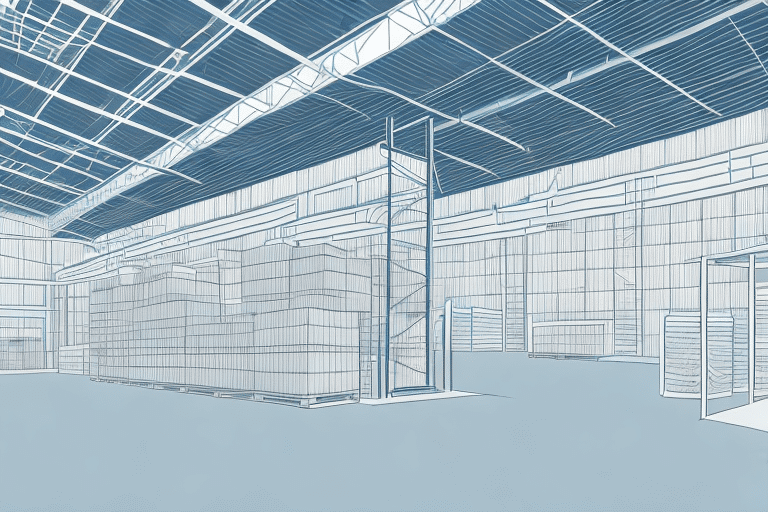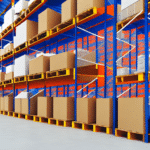Introduction to Zone Picking in Warehousing
Effective warehouse management is pivotal for ensuring timely and accurate order fulfillment. Zone picking is a strategic method that can significantly enhance productivity and accuracy within warehouse operations. By assigning workers to specific zones, businesses can streamline their picking processes, reduce errors, and optimize overall efficiency.
What is Zone Picking and How Does It Work?
Zone picking divides the warehouse into distinct sections, or zones, with each worker responsible for a particular area. This specialization allows workers to become experts in their zones, leading to faster and more accurate picking. Products are organized based on location or category, and workers move within their zones to collect items for orders.
In practice, orders are often broken down into segments that correspond to different zones. Workers pick items from their assigned zones, and the partially completed orders are then consolidated for packing and shipping. This method minimizes the time spent traveling across the warehouse, thereby increasing overall efficiency.
Benefits of Implementing Zone Picking
- Increased Productivity: Specialization allows workers to pick items more quickly within their designated zones, boosting the overall throughput of the warehouse.
- Enhanced Accuracy: Focusing on specific zones reduces the likelihood of errors, as workers become more familiar with the inventory in their areas.
- Cost Savings: Efficient zone picking reduces labor costs by minimizing unnecessary movement and streamlining the picking process.
- Scalability: Zone picking systems can be easily scaled to accommodate growing inventory or increased order volumes.
Types of Zone Picking Strategies
Static Zone Picking
In static zone picking, zones are permanently assigned to specific workers. This consistency helps workers become highly efficient in their zones, but may lack flexibility in handling fluctuating order volumes.
Wave Picking
Wave picking involves grouping orders into "waves" that are processed simultaneously. Workers pick items for multiple orders within their zones during each wave, improving efficiency during peak times.
Batch Picking
Batch picking allows workers to collect items for multiple orders in one go, reducing the number of trips required and speeding up the picking process.
Zone Skipping
Zone skipping enables workers to pick items from multiple zones without returning to their original zone, further enhancing picking speed and reducing travel time.
Implementing Zone Picking: Best Practices
- Conduct a Warehouse Layout Analysis: Assess the current warehouse layout to determine the most efficient zone divisions.
- Invest in Technology: Utilize warehouse management systems (WMS), barcoding, and RFID technologies to automate and streamline the picking process.
- Train Employees Thoroughly: Ensure that all workers understand the zone picking process and are proficient in using any associated technologies.
- Monitor and Optimize: Regularly review picking performance metrics to identify areas for improvement and adjust zones as necessary.
The Role of Technology in Zone Picking
Advanced technologies play a crucial role in optimizing zone picking systems. Implementing a robust Warehouse Management System (WMS) can automate inventory tracking, streamline order processing, and provide real-time data analytics. Additionally, technologies like Automated Guided Vehicles (AGVs) and robotic arms can further enhance picking speed and accuracy.
According to a Gartner report, investments in warehouse automation technologies have been increasing, with businesses seeking to improve efficiency and reduce operational costs.
Training and Workforce Development
Successful implementation of zone picking requires comprehensive training programs to ensure all employees are proficient in the new system. Effective training should include:
- Hands-On Training: Practical sessions where workers can practice picking within their zones.
- Detailed Manuals: Providing written guides that outline procedures and best practices.
- Ongoing Support: Offering continuous training opportunities and support to address any challenges that arise.
Avoiding Common Implementation Mistakes
While zone picking offers numerous benefits, improper implementation can lead to inefficiencies. Common mistakes to avoid include:
- Insufficient Planning: Failing to thoroughly analyze warehouse layouts and workflows before implementing zone picking.
- Lack of Employee Training: Neglecting to train workers adequately, leading to confusion and errors.
- Underestimating Technology Needs: Not investing in the necessary technology to support and optimize the zone picking system.
- Poor Monitoring: Failing to regularly review and adjust the system based on performance data.
Case Studies: Successful Implementations of Zone Picking
Many organizations across various industries have successfully adopted zone picking, resulting in significant improvements:
- Retail Sector: A major retailer implemented zone picking in its distribution centers, leading to a 40% increase in picking efficiency and a 25% reduction in order processing time.
- E-commerce: An online retailer introduced a zone picking system, which improved order accuracy by 35% and reduced labor costs by 20%.
- Manufacturing: A manufacturing firm adopted zone picking to handle its complex inventory, resulting in a 50% decrease in picking errors and enhanced overall supply chain reliability.
These case studies highlight the tangible benefits of implementing zone picking systems, emphasizing increased efficiency, accuracy, and cost savings.
Future Trends in Warehousing and Zone Picking
The future of warehousing is poised to incorporate even more advanced technologies to further optimize zone picking. Emerging trends include:
- Artificial Intelligence (AI) and Machine Learning: Utilizing AI to predict order volumes and optimize zone allocations dynamically.
- Internet of Things (IoT): Integrating IoT devices for real-time tracking and monitoring of inventory and picking processes.
- Augmented Reality (AR): Implementing AR glasses to provide workers with real-time picking information and navigation assistance within their zones.
These innovations will continue to enhance the efficiency and effectiveness of zone picking systems, making warehouses smarter and more responsive to changing demands.
ROI Analysis: Calculating the Cost Savings and Benefits of Zone Picking
Determining the return on investment (ROI) for a zone picking system involves analyzing various cost and benefit factors:
- Labor Cost Reduction: Calculate the decrease in labor hours due to increased picking efficiency.
- Improved Order Accuracy: Assess the financial impact of reduced errors and returns.
- Inventory Management: Evaluate the savings from better inventory control and reduced holding costs.
- Technology Investment: Consider the initial and ongoing costs of technology required for zone picking.
- Operational Efficiency: Factor in the time saved in the picking process and its impact on overall operations.
By systematically evaluating these factors, businesses can demonstrate the financial viability and long-term benefits of implementing a zone picking system.
Conclusion
Implementing a zone picking system can revolutionize warehouse operations by enhancing productivity, improving accuracy, and reducing costs. By adhering to best practices, investing in the right technologies, and providing thorough training, businesses can successfully adopt zone picking to meet their operational goals. As the warehousing industry continues to evolve, staying informed about future trends and continuously optimizing zone picking strategies will be essential for maintaining a competitive edge.




















